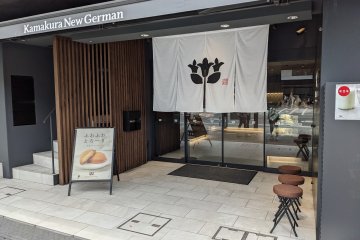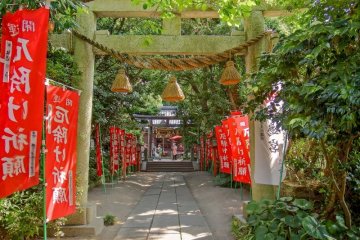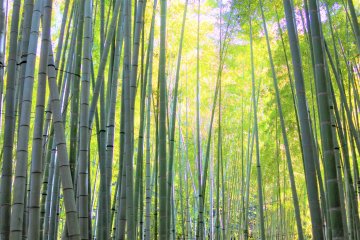
ทานอาหารกลางวันที่ The Scapes ในฮะยะะมะ
Tomoko Kamishimaทานอาหารกลางวันที่ The Scapes ลิ้มลองสลัดผัก สเต็กเนื้อนุ่ม และของหวานอร่อยๆ ท่ามกลางบรรยากาศและทัศนียภาพอันงดงาม

ให้คุณได้รู้สึกเหมือนอยู่บ้านในพื้นที่เลานจ์ริมทะเลอันแสนผ่อนคลายที่ตั้งอยู่ริมชายฝั่งทะเลที่มีชื่อเสียงของฮายามะ อันเดอร์ เดอะ ปาลโม มีการตกแต่งภายในที่เรียบง่าย ซึ่งผลิตจากวัสดุในท้องถิ่นโดยช่างฝีมือในพื้นที่ ที่นี่มีคาเฟ่ และพื้นที่จัดกิจกรรมสำหรับการจัดนิทรรศการ ป๊อปอัพสโตร์ คลาสออกกำลังกาย และการฉายภาพยนตร์ คุณสามารถมานั่งเอนหลังพร้อมเพลิดเพลินไปกับเมนูเครื่องดื่ม แอลกอฮอล์ และอาหารของคาเฟ่ (ทั้งของหวานและอาหารจานเดียว) มองออกไปที่วิวของอ่าวซากามิจากระเบียงไม้โดยมีเอะโนะชิมะ และภูเขาไฟฟูจิเป็นฉากหลัง จากอันเดอร์ เดอะ ปาลโม สามารถเดินมาตามทางเลียบชายหาดเพื่อไปยังคาบัน ฮายามะ ซึ่งตั้งอยู่บริเวณใกล้ๆ กัน
From Zushi Station, take a bus and alight at Morito Coast (~15 min ride). It's a 5 minute walk from the bus stop.

ทานอาหารกลางวันที่ The Scapes ลิ้มลองสลัดผัก สเต็กเนื้อนุ่ม และของหวานอร่อยๆ ท่ามกลางบรรยากาศและทัศนียภาพอันงดงาม

ถ้าคุณมาที่ฮานามะ โฮเต็ล โอโตว่า โนะ โมริ วิธีที่ดีที่สุดที่คุณจะใช้เวลาอาจจะเป็นการที่ไม่ทำอะไรเลย แค่พักผ่อนอย่างเดียว ที่นี่คุณสามารถหาบรรยากาศของรีสอร์ทอย่างแท้จริงได้!

ไทเซน-คาคุเป้นโรงเตี๊ยมอายุ 100 ปี และอยุ่ติด ๆ กับวัดฮาเสะ คันนอนเลย บริการของที่นี่จะเป็นประสบการณ์อันน่าประทับใจของคุณที่คามาคูระ

ลิ้มรสหมูทอดที่มีชื่อเสียงของอะราทามา และคุณจะตกหลุมรักกับรสชาติอันสดใหม่ ที่นี่ไม่ได้มีเพียงเมนูทงคัตสึเท่านั้น อย่าลืมลิ้มลองอาหารเมนูอื่นๆ ของอะราทามา เช่น มอซซาเรลลา เมนชิ คัตสึ และครีม โคร็อกเกะ

ค้นพบรสชาติที่ชาวบ้านคามาคุระหลงใหล ใหม่เค้กสปันจ์คัสตาร์ดเนื้อนุ่มของเยอรมันเป็นของหวานที่จะสร้างความประทับใจอย่างแน่นอน รสคัสตาร์ดคาราเมลเป็นที่นิยมอย่างมากในหมู่นักท่องเที่ยว

ที่ Nature et Sens ร้านอาหารฝรั่งเศสสุดสร้างสรรค์ ลูกค้าจะได้รับประทานอาหารมื้ออร่อย พร้อมประสบการณ์ทางประสาทสัมผัส โดยที่นี่ใช้วัตถุดิบตามฤดูกาลและผลผลิตของคามาคุระเป็นส่วนประกอบสำคัญของอาหารที่สวยงามน่าอัศจรรย์เหล่านี้ เพลิดเพลินกับไวน์สักแก้วพร้อมมื้ออาหารของคุณที่มีให้เลือกสรรอย่างหลากหลาย เพื่อประสบการณ์ที่ดีที่สุด

Yakumo Shrine, also called Yakumo Jinja, was established around 1082 by Yoshimitsu Minamoto—a Minamoto clan samurai during the Heian Period—and is believed to be the oldest talismanic shrine in Kamakura. It is located in the Omachi neighborhood and is said to ward off bad luck. Yoshimitsu Minamoto founded the shrine to help protect the people of Kamakura against the many epidemics that had taken hold of the area. The shrine represented a branch of Gion Shrine (modern day Yasaka Shrine) in Kyoto, which was known for its protection against illnesses. When the severity of Kamakura’s epidemics lessened in 1084, the shrine became a popular spot to repel bad luck. Today, the shrine is a small, quiet, and off-the-beaten-path spot to pray for good luck. Enjoy the peaceful grounds and be sure to collect a red Goshuin stamp at the shrine’s office to commemorate your visit.

Myohonji, located in the heart of Kamakura, is one of the oldest Nichiren-sect temples of Japanese Buddhism. Despite its city location, the temple is renowned for its tranquil atmosphere and lush encircling nature. It also tends to be less touristy than other temples in the area. Myohonji was founded in 1260 by Hiki Yoshimoto after he encountered the Buddhist priest and philosopher Nichiren Shonin in Kamakura. The site of the temple was previously home to the Hiki clan, before they were defeated by the Hojo clan in the early 1200s. Hiki Yoshikazu donated his home to Nichiren Shonin for the souls of his fallen clan, which later grew to be Myohonji. Some notable structures include Soshido, Myohonji’s largest temple building, Nitenmon gate, a beautiful inner gate, and a bronze statue of Nichiren. Enjoy the temple grounds in all seasons with spring cherry blossoms, verdant summer foliage, fiery autumn maple and ginkgo leaves, and winter plum blossoms.

Hōkoku-ji is an old temple in the Kenchō-ji school of the Rinzai sect of Zen Buddhism located in Kamakura, Japan. Famous for its bamboo garden, it is also known as "Bamboo Temple". A statue of Gautama Buddha, called Shaka Nyorai in Japanese, in a sacred hall is the temple's principal image. [Wikipedia]